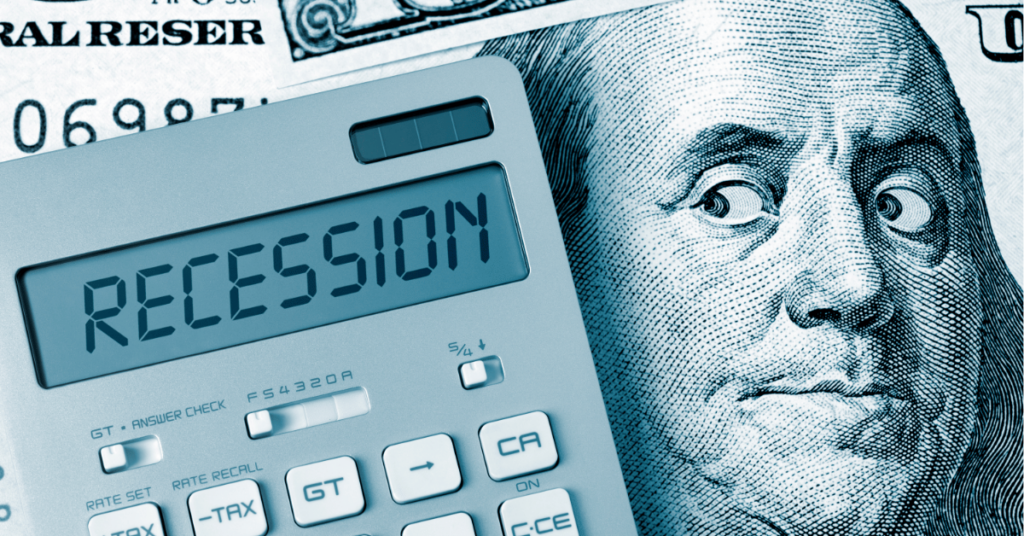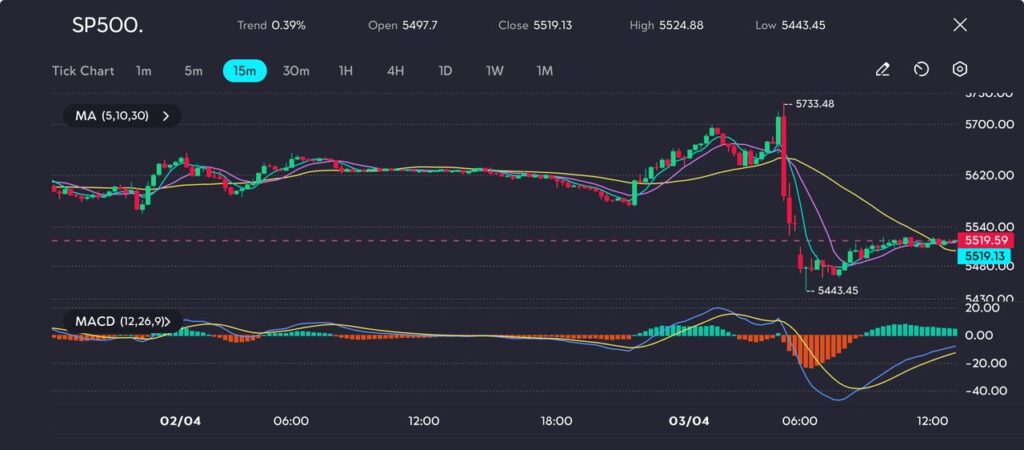
Global markets were shaken after a sudden tariff announcement reignited fears of economic uncertainty. Investors reacted swiftly, triggering sharp market movements as concerns over rising costs, disrupted supply chains, and potential retaliation took centre stage. With recession risks back in focus and volatility surging, traders are bracing for what could be a turbulent period ahead.
The S&P 500 saw a sharp downturn on Wednesday following a surprise announcement from US President Donald Trump regarding extensive tariffs on key global trade partners.
The index tumbled from an intraday peak of 5,733.48 to a low of 5,443.45 before recovering slightly to close at 5,519.13.
Market charts highlight this sudden shift: after a period of relative stability, the index surged early in the session but quickly reversed course after the tariff news.
The MACD (12,26,9) confirmed the bearish momentum, with the indicator crossing below the signal line and the histogram expanding into negative territory, reinforcing the selling pressure.
Trump’s announcement included substantial tariff hikes—34% on Chinese imports, 20% on goods from the European Union, and up to 46% on Vietnamese products, alongside measures targeting Japan and Taiwan.
The news triggered immediate declines in global markets: Asian stocks fell by 3%, European futures dropped 1.7%, and Apple’s stock plummeted 7% in after-hours trading.
These tariffs directly impact the technology sector, particularly in Asia, where many components for US electronics are manufactured. Companies such as Apple and Intel are bracing for higher production costs and shrinking profit margins.
Analysts warn that these measures could increase recession risks, drawing comparisons to the damaging effects of the 1930s Smoot-Hawley Tariff Act.
US consumer prices are projected to rise, with the auto industry facing cost increases of between USD 6,000 and USD 10,000 per vehicle.
The bond market reacted immediately, with Treasury yields hitting multi-month lows as investors sought safe-haven assets.
Fed funds futures now indicate expectations of 80 basis points in interest rate cuts by year-end, even as inflation concerns mount.
The Federal Reserve faces a challenging scenario—balancing inflation risks with the potential for economic slowdown.
While the White House insists that these tariffs are part of a negotiation strategy, uncertainty is already weighing on business confidence.
Many companies are holding off on capital investments until more clarity emerges, while the European Union and other trade partners are expected to introduce retaliatory measures.
On a 15-minute chart, the S&P 500 exhibited a strong early rally, reaching 5,733.48, supported by short-term moving averages (5,10,30).

However, the momentum quickly faded, leading to a sharp drop to 5,443.45. This sell-off was reflected in a steep MACD decline and a bearish crossover.
Following the low, the index stabilised near 5,519.13, showing early signs of consolidation.
The MACD histogram has begun shifting to green, indicating a potential recovery, but downward-tilted moving averages suggest caution in the near term.
The S&P 500’s dip below 5,500 signals heightened uncertainty and potential volatility in upcoming sessions.
If the index fails to reclaim the 5,600 mark soon, a deeper correction towards 5,400 or lower remains a possibility.
Investors are closely watching for further developments, policy responses, and the broader economic fallout. With market sentiment rattled, this tariff-driven turbulence could be just the beginning.
Click here to open account and start trading.